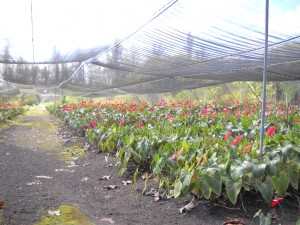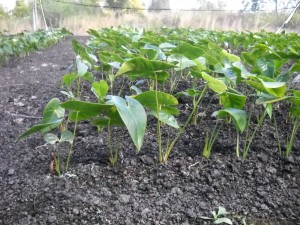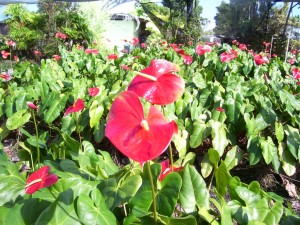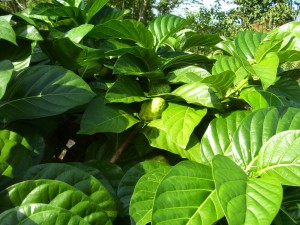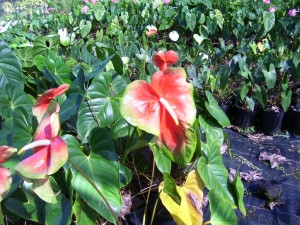Ukulele History: The History Of The Ukulele In Hawaii
The ukulele is a Hawaiian instrument that resembles a miniature guitar. Though it might look like a guitar it is quite different from a guitar. It has four strings, instead of six strings like a guitar and it is tuned differently. It usually is tuned to GCEA, while a guitar is tuned to EADGBE. It is also played differently. Though a few ukulele players will use a pick like most guitar players use, traditionally, an ukulele is played with the fingers alone.
This instrument was first introduced to Hawaii back in 1879. It is based on two Portuguese instruments called the cavaquinho and the rajão, which were brought to Hawaii by the early Portuguese immigrants, who came here to work on the sugar plantations.
Edward Purvis, the vice-chamberlain of King Kalakaua, heard someone playing the cavaquinho and decided to learn how to play it. Purvis was a small and very energetic man. He played the cavaquinho with a lot of energy and because of this; the Hawaiians gave him the nickname of “Ukulele”, which means jumping flea. He received this nickname because his energetic playing style and small stature reminded them of a jumping flea.
Later, three cabinet makers from the Portuguese region of Madeira, built the first ukulele, modeling it upon the rajão and cavaquinho, which Purvis played so well. Someone decided to apply Purvis’s nickname to this new instrument and this is how the ukulele got its name. The name of this instrument is doubly apt, because many say that the fingers of an ukulele player resemble jumping fleas, especially when they are playing a fast song.
From its humble beginnings back in 1879, in Hawaii, the ukulele has become a popular instrument. In 1920, it first became popular in the U.S. during the Jazz age. And in the 1990s its popularity has begun to climb again through musicians like Israel Kamakawiwo’ole, Jake Shimabukuro and even former Beatle, George Harrison.
Anthurium Fertilizer: A Guide To The Nutrients Required By Anthurium Plants
Like all plants, anthurium plants require certain nutrients in order to grow. The absence of these nutrients can cause your plants to grow slower or even die. Proper anthurium care dictates giving your plants the correct amount of each of these nutrients. This is a brief guide to these essential nutrients and the symptoms that you might see if your plant is deficient in them.
The three main nutrients required by anthurium flowers and all plants are nitrogen, phosphorus and potassium. Just about every fertilizer on the market contains these elements because they are vital to just about all plants. The lack of any one of these nutrients will usually cause the following symptoms to occur. First, you will notice stunted growth. Your plant will either grow more slowly or stop growing completely. Second, you will notice that the leaves of your plant will begin to turn yellow, and eventually the leaves will start to die. Finally, if nutrients are still not provided, your plant will die.
Magnesium is another vital nutrient. Without it, your plant will be stunted and its leaves will begin to turn yellow and start dying. In addition, a lack of magnesium will cause new leaves to be deformed. Calcium is also very important. Lack of calcium can cause the flowers of your plant to die. Calcium deficiency will cause new leaves to be deformed and will also distort the edges of mature leaves. If the deficiency continues, the leaves will start turning yellow and begin dying.
Sulfur is another important nutrient. Lack of sulfur will result in slight stunting of your plant and slight yellowing of its leaves. Your plant may be able to survive a sulfur deficiency, but why take any chances?
Probably the easiest way to resolve these deficiencies is to use a complete fertilizer. If you look around your garden store, you will be able to find something that has all of these nutrients in slow release form. In most cases, this should be all you need. But some severe cases of calcium and magnesium deficiencies may warrant the use of dolomite. This contains both calcium and magnesium.
Anthurium Pests: Mortal Enemies Of Anthuriums
Anthurium plants are tough, but just as Superman has his weaknesses, so do anthuriums. As long as you follow the basic principles of anthurium care, your plants should be able to shrug off the majority of problems. However, even with the best of care, anthuriums can succumb to the following pests.
Anthracnose is a fungal disease caused by Colletotrichum gloeosporioides. Usually it is not deadly, but it is a great nuisance. When it infects your plants, it causes brown splotches to form on the spadix of your flowers. Sometimes this can cause the spadix to die off completely and start to rot. So if you want nice flowers you need to avoid this disease. You can do this by only raising anthracnose resistant varieties or by using any of a number of fungicides to keep it under control.
Nematodes are small worms that attack the roots of your plants. They burrow into the roots and as they are burrowing they are also feeding on the roots. This causes the roots to grow slower and keeps your plants from growing. They can kill your plants, but more likely will only cause them to be stunted. Fortunately, they can be eliminated with various agricultural chemicals.
Another grave threat is a group of fungi, which include: Pseudomonas, Colletotrichum, Rhizoctonia and Phytophthora. They are essentially parasites that live by consuming your plants. Left unchecked, they are deadly, but there is a lot that you can do to keep them at bay. They like water and low oxygen levels, so do your best to not give them what they want. Your plant likes water too, but just be sure that you don’t water it excessively. And if they are still a problem, any one of a number of fungicides can be used.
By far, the greatest enemy that your plants face is Xanthomonas blight. It is the most diabolical of threats to these plants. It kills nearly all plants that are misfortunate enough to get infected with it. It is a bacteria that is transported from plant to plant by water. If it finds the tiniest scratch on a flower or leaf, it will enter and begin attacking your plant. If you are lucky, you can remove the infected leaf and your plant may live. But if it reaches the core of your plant, the odds of your plant surviving are low. There are no known treatments for blight. It is generally a death sentence for any infected plant.
Anthurium History: The History Of The Anthurium In Hawaii
The story of the anthurium starts a long time ago in a land far from Hawaii. Anthurium plants first sprung up in the rainforests of South America. They lived there undisturbed for hundreds of centuries. Native peoples may or may not have made a big deal about them because they were much plainer looking than they are today.
Out of the hundreds of species of anthurium, one was brought to Hawaii in 1889 by a man named Samuel Damon. Damon was an interesting man. The son of missionaries, he rose to great prominence in the Kingdom of Hawaii as a business man and as a politician. In fact, in 1924 he left an estate that was worth over $250M. This may not sound like much, but adjusted into today’s dollars this figure is well into the billions. Damon, or more likely his gardeners, grew the anthurium andreanum that he imported in the gardens of his mansion.
From Damon’s gardens, these plants were introduced to other people who also started growing them in their gardens. These plants spread from garden to garden as people introduced them to friends. A big breakthrough occurred a few years later when people learned to propagate these plants by seeds, rather than cuttings. Seed propagation allowed people to selectively breed the flowers with the best traits and resulted in a proliferation of flowers in new shapes and colors.
In the 1940s florists in Hawaii began carrying a smattering of these flowers in their shops. These flowers became quite popular with locals and tourists, alike. And an industry was born. Some people started expanding their cultivation of anthuriums from their gardens to full scale farms. Initially they grew these flowers under the shade of fruit trees and tree ferns, but as their operations grew, they began raising anthuriums under structures specifically built for raising these beautiful flowers.
These days, anthurium flowers have become an international business. The invention of the airplane had a lot to do with this. Previously, most anthuriums were sold within the islands, but now, the airplane allows anthuriums to be shipped all over the world.
Anthurium Blight: How To Keep The Deadly Anthurium Blight At Bay
Some but not all anthurium flowers are susceptible to a disease called Xanthomonas blight. The blight is deadly. It doesn’t take any prisoners. When an anthurium plant is infected it will eventually die, unless you manage to remove infected leaves or flowers before the disease has spread. Generally, andreanum are susceptible to this disease, while andrecola, which are andreanum amnicola hybrids are resistant to it. So if you are growing andrecola you probably don’t need to worry about blight, but if you are growing andreanum, you might wish to read on.
Proper anthurium care is vital to keep this threatening menace at bay. Blight is spread by water and proximity. Water can carry Xanthomonas from an infected plant to an uninfected plant.
Obviously if you keep the plants close together, there is a greater chance of infection than if you keep them far apart. So if you are growing these plants in your garden you want them spaced as far apart as possible. But if you are a large quantity of them, you may not have a choice but to keep them closer together.
When growing these plants in close proximity there are several things you can do to reduce the transmission of blight. The first is changing how they are watered. Watering with drip irrigation will reduce the amount of water that gets on the leaves. This will reduce the transmission of blight from an infected leaf to an uninfected one. Second, immediately remove any plants that show signs of infection. Be careful not to let it touch other plants as it is carried away. Third be careful when walking in between your plants, especially if they are wet. You can easily spread blight when they are wet.
Finally, proper sanitation is essential. Make sure that there is no standing water where you grow your anthurium. Sterilize all pots and tools before use. Rubbing alcohol can be used as a sanitizing agent. Clear away any dead leaves. And make sure you quarantine any new plants for a while to make sure that they are uninfected.
Anthurium Shipping: How Anthurium Flowers Get From Hawaii To Your Home
Have you ever wondered how anthurium flowers get from a farm on Hawaii all the way to your home? Well it is a very involved process and a number of people and companies have to work together to make it happen. A lot of things have to go right in order for fresh anthuriums to arrive at your door. If any one step in the process fails or is delayed, wilted flowers are the result.
It all starts on an anthurium farm in Hawaii. The flowers are harvested by hand, usually with small knives that are frequently dipped in alcohol to sterilize their blades after each flower is cut to prevent the spread of a bacterial disease between plants. The flowers are then put in containers of water and stored at a farm building for pickup.
Next, the distributor will pick up the containers of flowers and put them into a van. While taking the flowers to the packing facility, the driver has to drive very carefully as an unexpected stop can knock the containers of flowers over.
At the packing facility, flowers are sorted and graded so that you get only the best flowers. They are then taken out of water and neatly placed in boxes that are lined with strips of paper to cushion them, while they are on their journey to your home.
After packing, they are then driven to an air freight company. They can only be delivered by plane as all other modes of transportation take too long. The transit company then puts the boxes on a plane, which usually takes them to the company’s distribution hub. From the distribution hub, they are delivered to your doorstep.
If there are any delays in any of the steps that I listed above, the result is wilted flowers. Furthermore, cold weather can place additional stress on your flowers as they are in transit and cause additional problems. As you can see, the path from the farm to your door is long and complex.
Anthurium Pruning: How To Prune Your Anthurium Plant
If you have had your anthurium plant for a long time, you may want to consider pruning it for several reasons. First, if your anthurium has a lot of dead or yellow leaves they should be removed. Second if a leaf or flower has been injured by a pest and become infected it should also be removed. Third, if your plant has an excess of leaves, it can be pruned for aesthetic reasons.
To start make sure you have the following supplies on hand. You will need pruning shears, a cloth and rubbing alcohol. Put a little alcohol on the cloth and rub it over the blades of your shears to sterilize them. Sterilization is a very important step that is required to keep your plant disease free.
Next, look for any dead or yellow leaves on your plant. If you find any, gently pull them off. If they do not come off easily clip them off with your shears near the stalk of your plant. After each cut be sure to sterilize your shears to prevent the spread of bacteria to your plant.
After that, look for diseased leaves and flowers, and clip them off. Make certain you are especially careful to sterilize your shears when working with diseased portions of you plant. But, hopefully you will be lucky and not have any diseased leaves or flowers to trim off.
At the end of your plant’s growing season, you can remove leaves for aesthetic reasons if your plant has more than four leaves. If you wish, you can trim off any excessive leaves that stick out at bad angles to make your plant look better. But when you are doing this make sure you leave at least four leaves or you may harm your plant. When doing this try to remove older leaves and leave the younger leaves to develop further.
Anthurium Problems: Common Problems Faced When Growing Anthurium Plants
Usually anthurium plants are very easy to grow, but sometimes you may encounter a few of these common problems when raising them. Most of the problems you will face when growing anthuriums will be the result of errors in watering, fertilizing or light levels. When growing anthuriums outdoors, pests can also be an issue, but I assume that most of you will be growing your plants indoors, so I am not going to cover pest issues.
The number one cause of problems has to do with watering. Improper watering can permit fungus to attack your plant and so it can be indirectly responsible for harming your plant. Fungus and other anaerobic bacteria grow well when air is not allowed to reach the roots of your plant.
Over watering and the use of a soil that doesn’t drain well are common issues. If your plant has stopped growing and has started producing wilted leaves, you may have a problem with fungus. You may be able to fix this by repotting your plant into a soil that drains better and by being careful not to over water your anthurium. When repotting, you may need to trim off the diseased or damaged parts of your plant.
Another big issue is over fertilizing your plant. If your plant is turning yellow or brown, it could be receiving too much fertilizer. Stop adding additional fertilizer and try to rinse out the excess fertilizer with water.
Finally, too much or too little light can also cause problems. If your plant seems to be growing slowly and producing few flowers, this could mean that it is receiving too little light, especially if its leaves are dark green. Try moving your plant to a brighter area, but never put it in direct sunlight. If your plant is getting bleached and the tips of its leaves are turning brown, it may be receiving too much light. Try moving it to an area with a little less light.
Hawaii Plants: Anthuriums, Silverswords, Noni and Sandalwood
Hawaii has a number of plants and animals that are found nowhere else on the planet. It also has a number of plants and animals that have either come here on their own or been brought here by people that now consider Hawaii a second home. Today I would like to share a few of these remarkable plants with you.
Haleakala Silversword
The Haleakala Silversword is incredibly rare, it is only found in one place in the entire world, on the summit of mount Haleakala on the island of Maui. It is a very interesting plant that has thin silver colored leaves that look almost like nails sticking out of the stalk of the plant. The leaves are arranged in a circular pattern around the stalk, which grows straight up. It is well worth visiting Haleakala, to see a Silversword, as its crater is an interesting place. It almost looks like the surface of the moon, except for the Silverswords.
Anthurium
The anthurium is not native to Hawaii. In fact, it originally comes from South America and it was brought here in 1850. But Hawaii has done a lot to popularize anthurium flowers. In the 1950s, anthurium growers started developing many of the varieties that we see today. Now you can find heart shaped, tulip shaped or even obake shaped anthuriums and they come in many different colors. When you visit Hawaii, be sure to check out an anthurium farm.
Sandalwood
Sandalwood is found in India, Australia and across the Pacific. It was once plentiful in Hawaii, but it was almost wiped out by the Sandalwood trade. The reason Sandalwood is so popular is that it produces a beautiful wood that also smells great. It is often used to build small items like jewelry boxes and chess pieces and its scent lasts for years.
Noni
Noni is native to South East Asia and Australia and is widely distributed around the Pacific, including Hawaii. The fruit of the Noni has a horrible smell and taste, sometimes it is called the vomit fruit. In some places it is only eaten when there is nothing else left to eat, when people are on the verge of starving. Here in Hawaii, it is used in traditional medicine. And it appears that scientists are also becoming interested in its medicinal properties. Now there are a number of research studies in progress.
Hawaii Flowers: Anthurium, Heliconia, Hibiscus and Orchid
Today I want to tell you about some of my favorite varieties of tropical flowers that grow here in Hawaii. As you well know, Hawaii is a tropical island that never experiences the snows of winter. In fact the temperature seldom drops below 65 degrees. Also, Hawaii has an abundance of sunshine and rain, making it the ideal environment for plants to grow. This ideal environment allows many beautiful varieties of flowers to thrive here.
Anthurium Flowers
The first of my favorite flowers are anthurium flowers. The anthurium was brought here more than a hundred years ago from South America. It produces a lovely flower in many different colors. I have seen colors from red all the way to purple. Most of the time, it is shaped like a heart, though some varieties may be shaped like a tulip. A majority of the varieties are unscented, but a few of the tulip varieties smell great.
Heliconias
Heliconias are some of the most exotic looking flowers in the world. You can just imagine how these flowers look, when one of the varieties has been nicknamed, lobster-claws. The can be found near Indonesia and in South America. But they also seem to enjoy growing in Hawaii. The often produce red, orange or yellow flowers in strange configurations.
Hibiscus
The Hibiscus plant grows all over the world, including in Hawaii. In fact, Hawaii has made the yellow Hibiscus its state flower. Out of all of the flowers that I am describing today, the Hibiscus is the flower with the most conventional shape. But that doesn’t mean that it isn’t a beautiful flower. It comes in many colors, including red, yellow, pink and white.
Orchid
Finally, the orchid is another of those flowers that seems to grow everywhere. But they definitely enjoy it here too. Next to the heliconia, they are one of the most exotic looking flowers. I like how they look almost carnivorous, like they could gobble up a bee that is trying to pollinate it. As far as I know, there is only one edible orchid, the vanilla orchid. And this is grown on Hawaii too.




